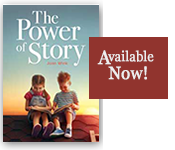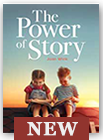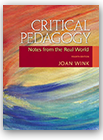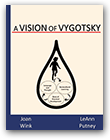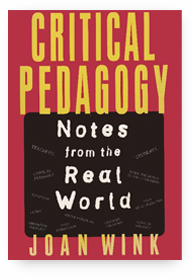FROM BUTTERCUP TO POWER
Now here is the problem with all of these thoughts about a caring heart, a critical eye, and time: It causes us to confront ourselves; it takes away the blame-game; and it does it in the most surprising ways. In the introduction, I wrote that I would tell the story of how I was forced to confront my own fear of power. On the surface, this may appear to be a story about a horse. Do not be fooled. Until each of us owns our own power (negotiates our own identity), we cannot be a part of empowerment (negotiating identities with students).
It began so simply. Dawn told me to read Naomi Wolf (1993). Wolf hypothesizes that women’s fear of horses is really a disguised fear of power. Her thesis is that pre-adolescent girls are fearless and courageous and often love horses. As they move through adolescence and seek to be more the way little boys want them to be, they develop a fear of horses – or, fear of power.
When I read that, I slammed the book shut. One of my main myths exploded (Nieto, 1996). This was not a metaphor to me – this was real world. I have lived a lot of my life on ranches. I grew up around horses and rode as a child. As a young adolescent, I became afraid of horses. This was also about the same time that I started noticing boys. I remember wishing they would think that I was “cute.” Since that time, I rationalized my fear of horses this way: Horses are bigger than I, stronger than I, faster than I, and certainly smarter than I. I have consistently been in situations which I had to make excuses about not wanting to go for a ride: “I’m busy;” or “I have to cook;” or “the kids need me.” And, my personal favorite: “Someone else can use my saddle.” Sometimes I didn’t succeed in talking my way out of a horseback ride. Invariably, long hours in a saddle followed, as I tried to hide my fear.
It seems that in life we sometimes bump into the right teacher when we are ready to learn. Apparently, I was there, and Wolf was the teacher. I stared out the window and set a new goal for myself: by the end of the summer, I would no longer be afraid of horses. I would be a horse-person.
In June we bought a horse named, Cowboy. I immediately changed his name to Buttercup. I was hoping that the change of name would make him gentle and me, fearless. My goal was to go for one ride in the country alone by the end of the month. During each day of June, I went for short, easy rides with my husband, who did not understand my fear but who accepted and respected it. On the last day of the month, Buttercup and I went out for a 3-mile ride alone. It was not fun, but I did it.
July brought another goal: Buttercup and I were to race across the prairies with reckless abandon. I succeeded, and can even do so without bouncing in the saddle and without my arms flailing in the wind – a prairie faux pas. Okay, it’s true, I shouted with joy as I raced through the pasture.
My goal for August was not just to ride, but to be good at it. I wanted to actually be helpful when moving cows. I wanted to be able to chase a calf and bring it back to the herd. Goal met. I wanted to be able to move a herd of cows through a gate. Goal met. An angry bull can still bluff Buttercup and me, but this is not a story about angry bulls. This is a story about fear of power.
| At rare intervals, the most significant factors in determining the future occur in infinitesimal quantities on unique occasions (Mumsford, 1956). |
